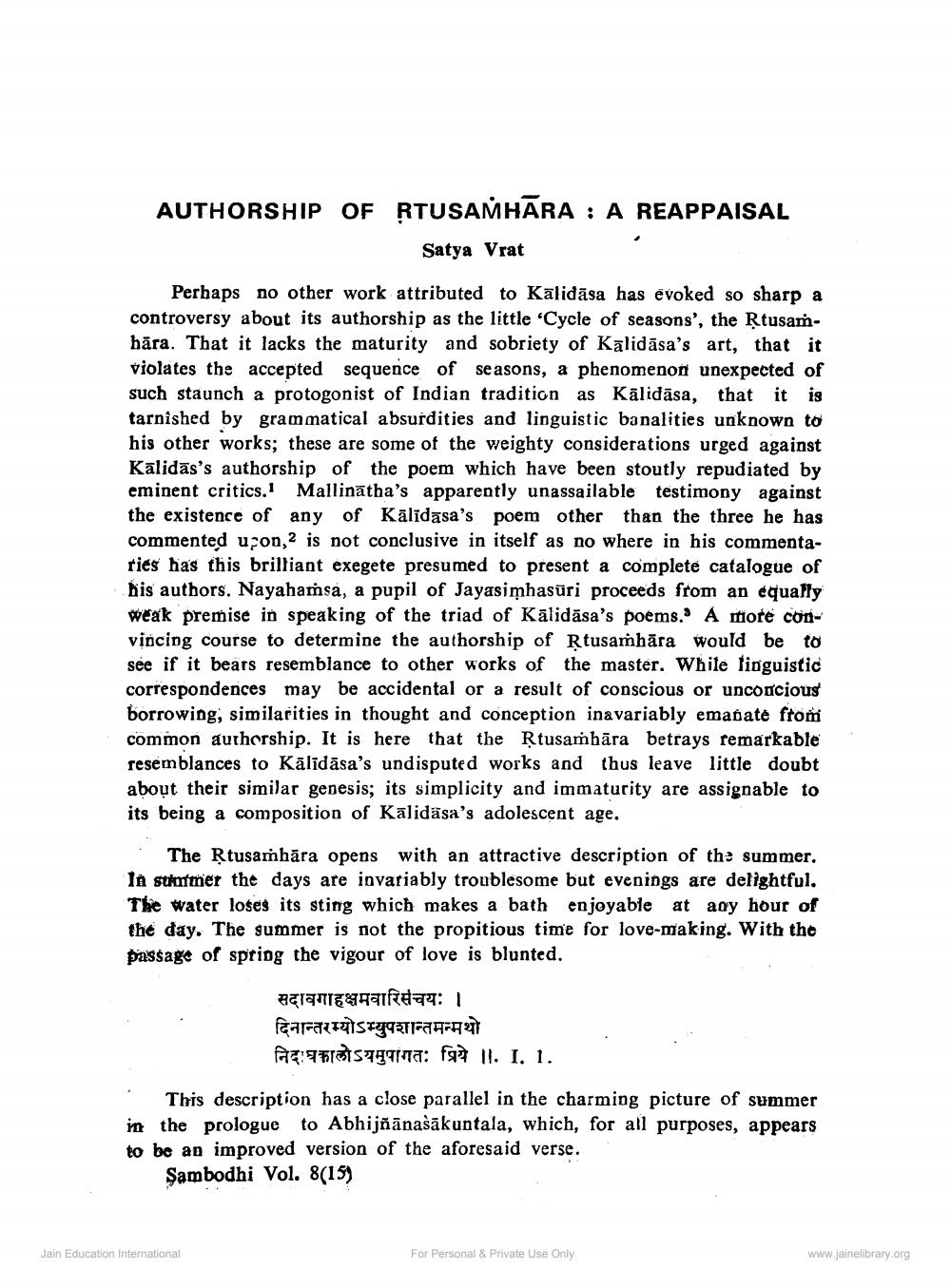________________
AUTHORSHIP OF RTUSAṀHARA: A REAPPAISAL
Satya Vrat
Perhaps no other work attributed to Kalidasa has evoked so sharp a controversy about its authorship as the little 'Cycle of seasons', the Rtusamhāra. That it lacks the maturity and sobriety of Kalidasa's art, that it violates the accepted sequence of seasons, a phenomenon unexpected of such staunch a protogonist of Indian tradition as Kālidāsa, that it is tarnished by grammatical absurdities and linguistic banalities unknown to his other works; these are some of the weighty considerations urged against Kalidas's authorship of the poem which have been stoutly repudiated by eminent critics. Mallinatha's apparently unassailable testimony against the existence of any of Kalidasa's poem other than the three he has commented upon,2 is not conclusive in itself as no where in his commentaries has this brilliant exegete presumed to present a complete catalogue of his authors. Nayaharhsa, a pupil of Jayasimhasuri proceeds from an equally weak premise in speaking of the triad of Kalidasa's poems. A more convincing course to determine the authorship of Rtusamhära would be to see if it bears resemblance to other works of the master. While linguistic correspondences may be accidental or a result of conscious or unconcious borrowing, similarities in thought and conception inavariably emanate from common authorship. It is here that the Rtusamhära betrays remarkable resemblances to Kalidasa's undisputed works and thus leave little doubt about their similar genesis; its simplicity and immaturity are assignable to its being a composition of Kalidasa's adolescent age.
The Ṛtusamhāra opens with an attractive description of the summer. In summer the days are invariably troublesome but evenings are delightful. The water loses its sting which makes a bath enjoyable at any hour of the day. The summer is not the propitious time for love-making. With the passage of spring the vigour of love is blunted.
सदावगाहक्षमवारिसंचयः । दिनान्तरम्योऽभ्युपशान्तमन्मथो
निदः कालोऽयमुपागतः प्रिये ॥ I. 1.
This description has a close parallel in the charming picture of summer in the prologue to Abhijñānašākuntala, which, for all purposes, appears to be an improved version of the aforesaid verse.
Sambodhi Vol. 8(15)
Jain Education International
For Personal & Private Use Only
www.jainelibrary.org




